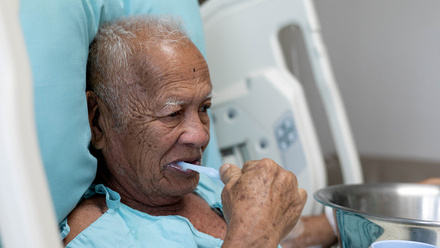A lift for health workers
Healthcare workers regularly have to lift patients, especially paramedics routinely assisting people who have suffered a fall. But this task is increasing their risk of injury, with an estimated 53,000 health and social work staff in the UK reporting work-related musculoskeletal disorders (MSD) in 2024 – 19% of all ill health in this sector – according to the Health and Safety Executive.
Portable lift devices aim to reduce exposure but there has been limited evidence on their ergonomic effectiveness. Researchers in Canada have now tested two devices relative to a manual lift, to assist with policy and purchase decisions within the health sector. The devices used in the study were an air bladder lift and a mechanical lift.
While lift assist devices can reduce biomechanical exposures on paramedics, they require more time to use, especially inflatable versions. The study found that paramedics “viewed the lift assist devices as an intervention that can prevent work-related MSD and that may lead to the possibility of a longer paramedic career”.
Participants said the devices were simple to use, adding that “most patients would feel more safe and secure on these devices in comparison to a manual lift”. But they did note that device effectiveness would depend on the surrounding environment and the patient’s condition.
Concerns were also raised about training, purchase and maintenance costs, storage and battery life and charging.
The researchers conclude: “The data from this study demonstrates the benefits for the use of lift assist devices when lifting patients from the floor. Participants perceive having access to a device would increase their ability to complete their job safely, increase career longevity, increase patient comfort and decrease their exertion. However, thematic analysis results identified several factors that could ultimately influence effectiveness if the lift assist devices were implemented.
“For paramedic services looking to introduce lift assist devices, it remains important to evaluate not only their anticipated effectiveness at mitigating MSD risk, but also usability and perceived factors that may influence uptake and use.”
The full study, Exploring the usability and perceived benefits and barriers of portable lift assist devices among paramedic workers, is available in the journal Applied Ergonomics.






